Marketing Management of NESTLE
36 Pages6123 Words901 Views
Added on 2021-05-03
Marketing Management of NESTLE
Added on 2021-05-03
ShareRelated Documents
OFFICIALMARKETING MANAGEMENTMARKETING MANAGEMENTSTUDENT NAME - STUDENT NUMBER - COURSE - MBA MANAGEMENT CONSULTANCY UNIVERSITY OF WALESWORD COUNT - Words 42781

OFFICIALMARKETING MANAGEMENT‘MILO’Launch inSri Lanka (www.nestle.com)2
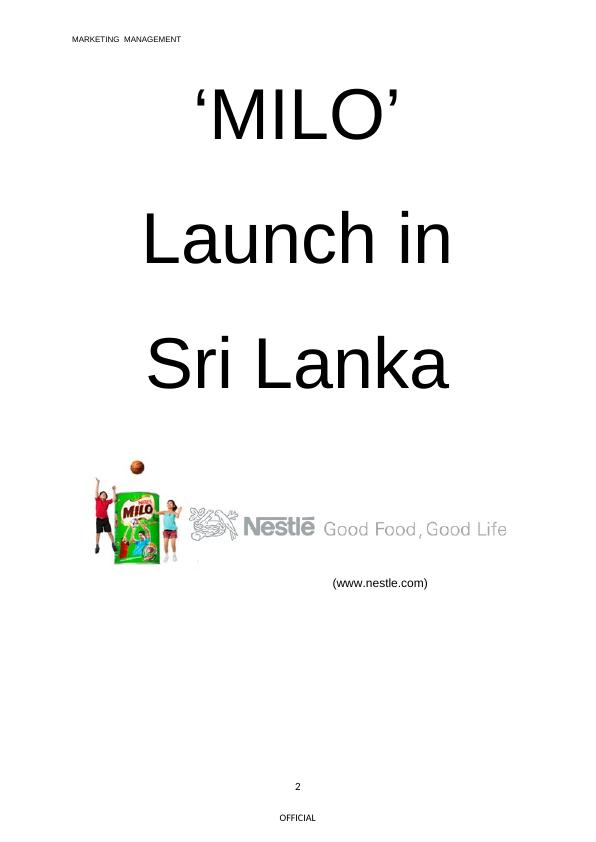
OFFICIALMARKETING MANAGEMENT-Contents Index - 1.0 Executive Summary and Mission Statement42.1 Marketing Audit (Situation Analysis)52.2 External Analysis – PESTEL52.3Industry Analysis - Porter’s 5 forces72.4Internal Analysis 82.5 SWOT Analysis103.1 Marketing Objectives123.2SMARTER Objectives123.3Brand MILO134.1 Marketing Plan144.2 Market Segmentation144.3 Target Market154.4 Positioning and Differentiation174.5 Marketing Mix194.6E-business strategy: e-commerce & m-commerce235.1Marketing Budget256.1Recommendationsand conclusion277.1 Bibliography287.2 Abbreviations307.3 Annex 1 - ACORN327.4 Annex 2 – Marketing Plana) Itemised budget based on months and amounts.33b) A 3-D Graph reflecting the distribution of costs 34C) Annual budget 353
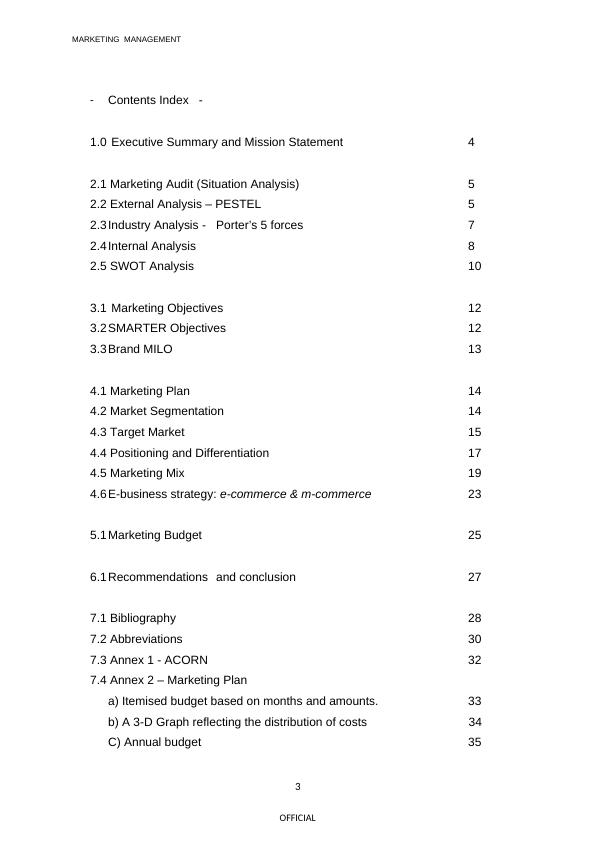
OFFICIALMARKETING MANAGEMENT[ 1.0 ]Executive Summary NESTLE is preparing to Launch a major chocolate drink, MILO in Sri Lanka and willbe competing with several multi-national and national companies. The competitorsare well established rivals in the crowded fast moving consumer goods (FMCG)industry. Brand ‘MILO’ and NESTLE as a FMCG company has many capabilities andcapacities to successfully launch the product, to establish, to develop and to gainmarket share. As the world’s leading nutrition, health and wellness company, Nestlé has aresponsibility to provide Sri Lankan consumers with high-quality, nutritious products,regardless of where Nestle sell them and the price point at which Nestle sell them.‘MILO’ launch in Sri Lanka is part of the focusing of specific needs of around 3 billionlower-income consumers worldwide. Nestle calls this strategy as PPPs (PopularlyPositioned Products) which PPPs offer consumers from low income bands toconsume high-quality food products with enriched nutritional values at an affordableprice tag. PPPs are defined as one of Nestlé’s main growth drivers for the years tocome.(www.nestle.com)4
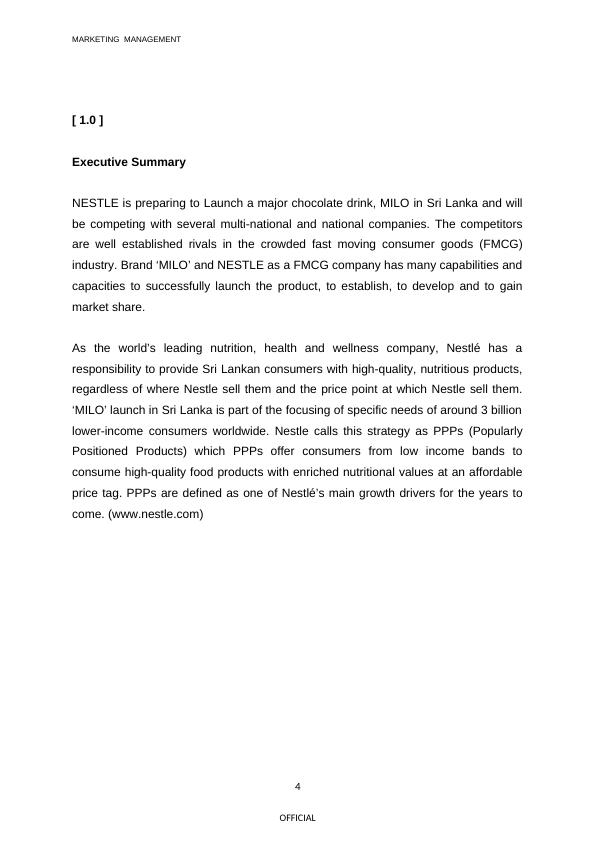
OFFICIALMARKETING MANAGEMENT[ 2.1 ] Marketing Audit (Situational Analysis) According to Johnson et al (2008) there are several layers of an organisation, theorganisation, competitors and markets, industry or sector and the macroenvironmental factors. It is vital for the management to analyse these layer carefullyto anticipate and (or) to influence change. An external and internal analysis providesa wide overview of these layers.[ 2.2 ] External Analysis - PESTELThe macro environment consists of broad external factors which can effect in agreater or lesser extent to the brand. The PESTEL framework can be used to identifythe trends in the political, economic, social, technological, environmental and legalimpacts. Political – After 26 years of Military Battle, Sri Lanka ended the sufferings of the civilwar in 2009 and the assurance of peace, harmony and security are factors positivelyimpacting all industries. ‘Nestle Healthy Kids programme’ was endorsed by the SriLanka’s first lady and given a very high profile for NESTLE and to its brands.5
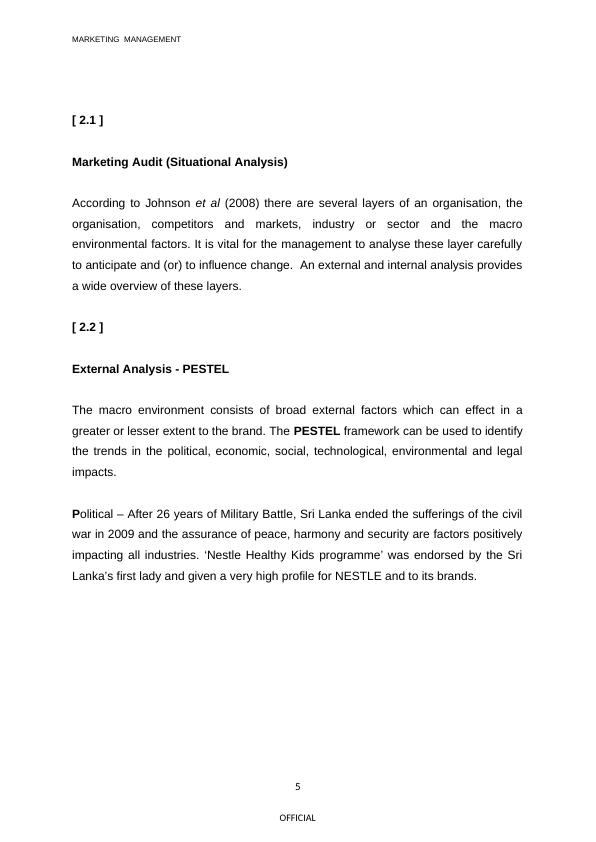
OFFICIALMARKETING MANAGEMENTwww.nestle.comEconomical – Sri Lanka’s Currency (the Rupee) was heavily depreciated since theyear 2001. Rising exchange rates are negatively impacting imported goods andservices as the costs are rising to the sky. Since 2009 Sri Lanka had a stableeconomic growth. In 2010 the GDP growth was 8.2% and is estimated to be 9.5% in2011 and heading for a double digit growth with low inflation, development ofinfrastructure and inward flow of foreign investments creating opportunities for Multi-National Companies. (www.wikipedia.org)Social – With the open trade policies of the Sri Lankan Government, the consumersare moving forward to experience the western cultures and exposure. But as anation of people who speaks three different languages, the campaign should avoidlanguage, religious and cultural barriers. As an example – the world famous R & B star ‘Akon’ was scheduled to perform a gigin Sri Lanka in March 2010. The organisers used his hit song ‘sexy chick’ foradvertising and promotions as to attract youth. The song had visuals of girls dancingand a Buddha statue was visible in the background. The country’s majority of thepopulation are Buddhists and they protested against the controversial video imagesand offensive song lyrics. The Government banned the gig due to public pressureand Akon was refused to enter to Sri Lanka. (www.guardian.co.uk)6
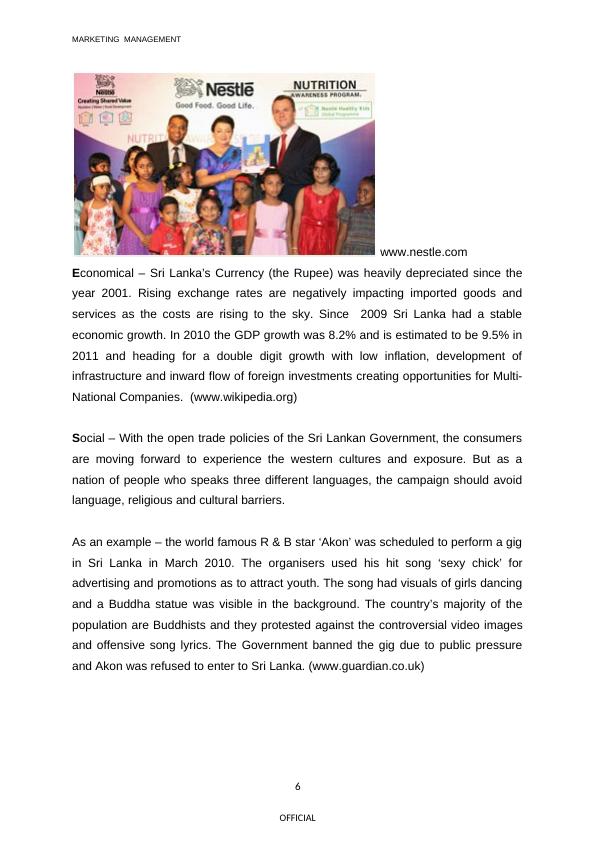
OFFICIALMARKETING MANAGEMENTDavid Guetta - Sexy Chick (Featuring Akon)Therefore the total marketing mix has to align with the ethos embedded in thesociety as it is a key factor for change and will significantly impact the success or thefailure of the campaign. Technological – Due to the rapid expansion in e-commerce and e-business solutionsin Sri Lanka it is vital to use the technological advances and e-channels throughoutthe campaign. Still the majority of the target market only has the media access toTV, newspapers, radio, and limited access to internet, emails. Majority of the elderlycitizens are not computer literate at all.Environmental – The general public and the pressure groups are stressing thegovernment and local authorities to act on carbon savings. And people are morelikely joining pressure groups than general politics. Organisations promote CSR arehighly valued in the society and public is prepared to pay a higher price as theybelieve their purchase will indirectly add value back to the society. Legal – Government taxation policies, consumer protection act (2009), consumerwatchdog on fair competition and advertising will create opportunities as well asthreats. Recent legislations in the country will enable a fast track process forExpatriates to come and work in Sri Lanka and the boost in the Tourism industry willadd opportunities. The PESTEL factors are positive for the MILO launch.7
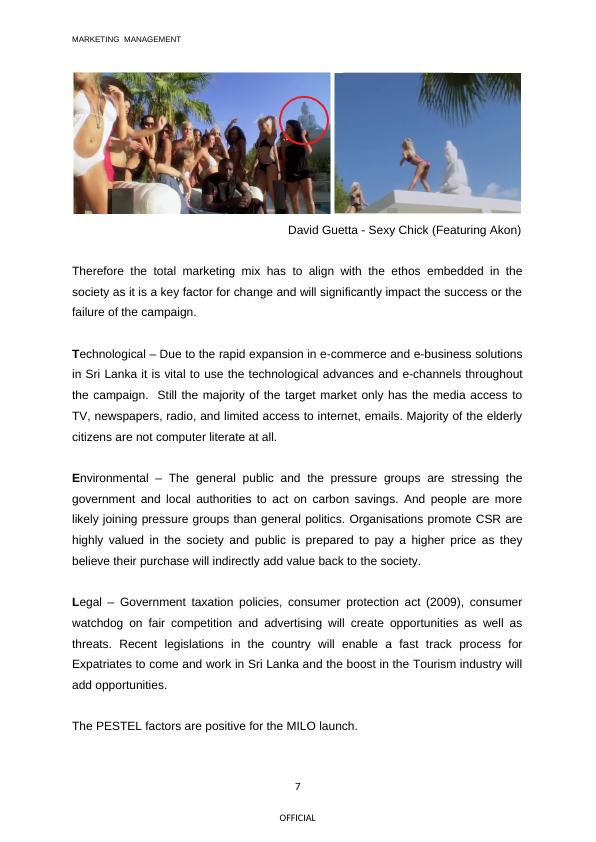
OFFICIALMARKETING MANAGEMENT[ 2.3 ] Industry Analysis - Porters Five ForcesAs Michael E. Porter (1980) explains, the 5 forces will assess the attractiveness and profit potential of the industry. The framework can be used as a strategic starting point to assess the FMCG industry. As Michael Porter identified 5 forces, which affects the market or market segmentsattractiveness in long term and effective segmenting criteria should be critical,measurable, accessible, differential and actionable.The threat of entry is minimal due to the NESTLE’s scale and experience, supplyand distribution channel network and product differentiation. The bargaining power ofcustomer is neutral. For FMCG products in Sri Lanka there are less concentratedbuyers, in the same time there is no switching cost for the buyer. They can switch toany substitute. Ex – Cadbury hot chocolate, the local brands Edna or Kandoschocolate drinks. Therefore the price and performance ratio is critical and extra-effortto put on advertising. Competitor rivalry is common in any industry and the FMCGindustry is rapidly growing, therefore at present the competition is balanced as noone competitor is trying to dominate the market.[ 2.4 ] Internal AnalysisIs mainly based on NESTLE’s core competencies and competitive advantages whichis hard to copy by other competitors. According to Wilson and Gilligan (2005),8

End of preview
Want to access all the pages? Upload your documents or become a member.
Related Documents
Strategic Management for Nestle in Sri Lankalg...
|22
|4878
|64
Business Environment NESTLE Assignmentlg...
|2
|2012
|688
Strategic Marketing Plan for Immune Boosterlg...
|16
|3127
|341
(PDF) Markets, Market Making and Marketinglg...
|12
|3534
|516
MARKETING MANAGEMENT Executive Summarylg...
|15
|4603
|311
Strategic Analysis of Maliban Biscuit Manufactorieslg...
|46
|3869
|90
